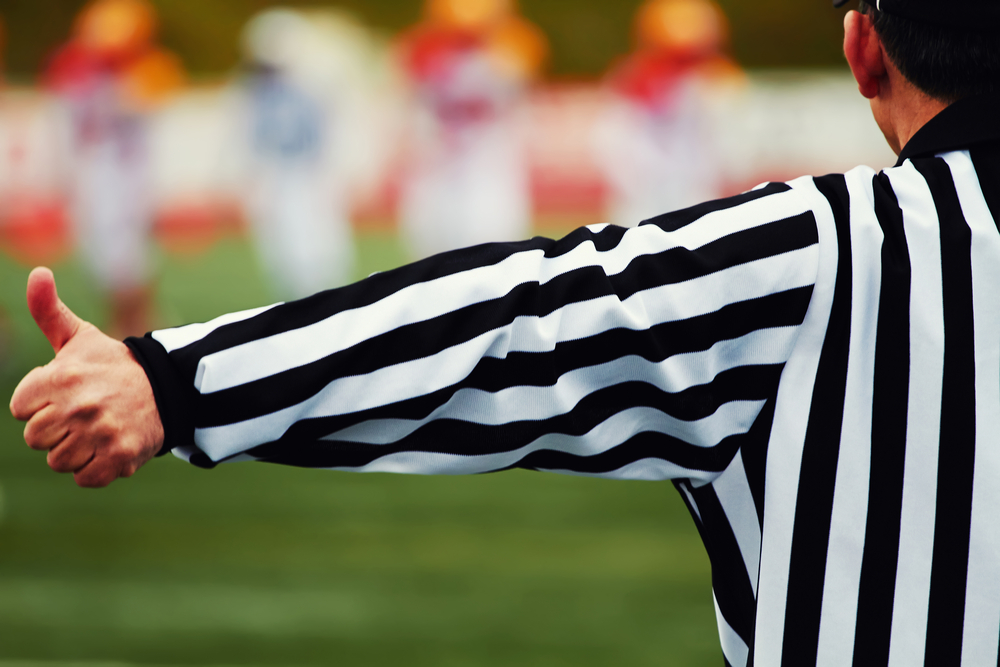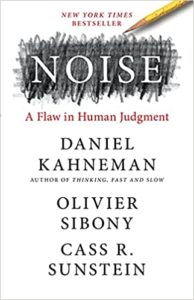Should Humans Be More Like Machines?
By Arnold Kling


- System noise, that is, unwanted variability in judgments that should ideally be identical, can create rampant injustice, high economic costs, and errors of many kinds.
-
- —Noise: A Flaw in Human Judgment, by Daniel Kahneman, Olivier Sibony, and Cass R. Sunstein.1 (P. 24)
-
Daniel Kahneman, Cass Sunstein, and Olivier Sibony (henceforth KSS) argue that inconsistency in human judgment is widespread, not well appreciated, and very costly. Sentences differ for similar crimes. Underwriting decisions differ for similar loan applicants. Hiring decisions differ for similar job candidates. Performance evaluations differ for similar employees.
KSS convincingly argue that variability in judgment is a significant source of unfairness and inefficiency.
- In 1977, for example, William Austin and Thomas Williams conducted a survey of forty-seven judges… In a case involving burglary, for example, the recommended sentences ranged from five years in prison to a mere thirty days (alongside a fine of $100). (20)
KSS distinguish noise from bias. If a lender turns down more loan applicants than is optimal, then its underwriting process is too biased toward rejection. But even if it approves the right proportion of applicants, it may still approve some bad applicants and reject some good applicants. This latter form of variability is what KSS call noise.
KSS classify three sources of noise. They call these occasion noise, level noise, and pattern noise. Occasion noise occurs in a given individual. Level noise and pattern noise operate at a system level when multiple individuals differ in their judgments.
Think of a baseball umpire calling a pitch near the outside corner. (If you prefer, think of a football referee deciding whether to call a tripping penalty when he sees an opposing player fall down nearby.)
Occasion noise refers to variability in the decisions made by a single individual. An umpire might see the same pitch twice, but call it a ball on one occasion and a strike on the other. KSS cite studies showing that a given judge might hand out a harsher or more lenient sentence depending on the time of day.
Level noise occurs when one individual more often comes down on one side than would another. In baseball, some umpires tend to call close pitches as strikes, while other umpires will call them as balls.
Pattern noise occurs when individuals judge differently under different circumstances. One umpire may call a close pitch a strike when it is a fastball, but call it a ball when it is a curveball. Another umpire might do the opposite. That is pattern noise, which KSS argue is the largest source of noise in many systems.
- Noise is mostly a product not of level differences but of interactions: how different judges deal with particular defendants, how different teachers deal with particular students, how different social workers deal with particular families, how different leaders deal with particular visions of the future. (202)
KSS point out that the amount of noise in a system often comes as a surprise to managers.
- When we asked 828 CEOs and senior executives from a variety of industries how much variation they expected to find in similar expert judgments, 10% was also the median answer and the most frequent one…
- Our noise audit found much greater differences. By our measure, the median difference in underwriting was 55%, about five times as large (29)
This implies that managers ought to focus more on identifying and reducing the sources of noise in their processes.
KSS make a number of suggestions for reducing noise. One suggestion is to select better people to make judgments. General mental ability (GMA) plays an important role.
- GMA contributes significantly to the quality of performance in occupations that require judgment… If you must pick people to make judgments, picking those with the highest mental ability makes a lot of sense. (215)
In addition to general mental ability, KSS suggest that good judgment is associated with a cognitive style known as actively open-minded thinking.
- To be actively open-minded is to actively search for information that contradicts your preexisting hypotheses. Such information includes the dissenting opinions of others and the careful weighing of new evidence against old beliefs. Actively open-minded people agree with statements like this: “Allowing oneself to be convinced by an opposing argument is a sign of good character.” They disagree with the proposition that “changing your mind is a sign of weakness” or that “intuition is the best guide to making decisions.” (218)
This actively open-minded thinking reminds me a great deal of what Julia Galef calls “The Scout Mindset” in her book of that title.
But KSS emphasize the importance of managers giving employees tighter rules and guidelines within which to work, along with better training. We make judgments more uniformly when we are given guidelines that are clear rather than vague.
KSS also favor stricter processes for making judgments. For hiring, structured interviews work better than open-ended interviews. Processes that break assessments into formal components work better than processes that allow intuition and first impressions to have an early influence.
It struck me that KSS missed the tension between their recommendation for choosing good judges and their recommendation for tightening up rules and guidelines. If good judges use the scout mindset, then tight rules and guidelines run counter to that. Tight rules and guidelines might discourage people with the scout mindset from becoming judges. It might also inhibit those with the scout mindset from using their actively open-minded thinking to make better decisions.
Another criticism I have of KSS is that they fail to connect to the large literature on process control in manufacturing. Twentieth-century management gurus, including Walter Shewhart and W. Edwards Deming, showed that quality control could be improved through statistical analysis and process redesign.
One of Deming’s important principles is that there is more leverage to reduce defects earlier in the process than later. Designing a product that is simpler to assemble is more effective than training additional quality-control inspectors.
If we apply this principle to criminal law, it would suggest that increasing the reliability of enforcement would do more to reduce unwanted variability than putting equivalent effort into improving sentencing practices. If we apply this to loan underwriting, it would suggest that there is more leverage from putting effort into improving data quality and analyzing the factors that affect default probabilities than from putting effort into training underwriters.
To the extent that KSS are correct that judgment should be constrained by tighter rules and guidelines, computers are likely to be better than humans at low-noise processing. Once we improve data quality and statistical analysis of borrower behavior, we turn loan underwriting over to computers.
In fact, I think that the strongest conclusion that one can draw from KSS is that computers will continue to take over for humans in more fields. The project of reducing noise amounts to asking humans to behave more like machines. For that purpose, computers have the edge.
Footnotes
[1] Noise: A Flaw in Human Judgment, by Daniel Kahneman, Olivier Sibony, and Cass R. Sunstein.
*Arnold Kling has a Ph.D. in economics from the Massachusetts Institute of Technology. He is the author of several books, including Crisis of Abundance: Rethinking How We Pay for Health Care; Invisible Wealth: The Hidden Story of How Markets Work; Unchecked and Unbalanced: How the Discrepancy Between Knowledge and Power Caused the Financial Crisis and Threatens Democracy; and Specialization and Trade: A Re-introduction to Economics. He contributed to EconLog from January 2003 through August 2012.
Read more of what Arnold Kling’s been reading. For more book reviews and articles by Arnold Kling, see the Archive.
